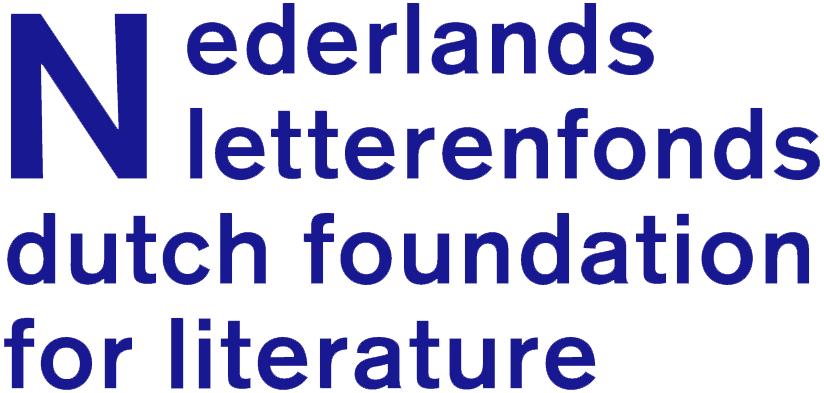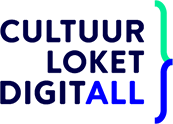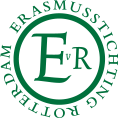Poem
Adam Dickinson
DARTETRAIODOALLWINENE
DARTETRAIODOALLWINEEN
Maar we hebben denk ik vaak een verkeerde indruk van de waarschijnlijkheid dat nauw verbonden soorten elkaars territorium binnenvallen, zodra ze in vrije intercommunicatie komen.Er gaan al lang geruchten dat de zesde druk van Darwins The Origin of Species een gespecialiseerde synthetische polymeer bevat die verantwoordelijk is voor een groot deel van de kiemkrachtige elasticiteit, dierlijke viscositeit en politieke zenuwknoop van het werk. Nieuw onderzoek heeft dit ongewone plastic blootgelegd. Maar voor we zijn eigenschappen onderzoeken, hebben we eerst enkele details over de chemische structuur van het boek nodig. Het bevat in totaal 1.009.495 letters. Het meest gebruikte zelfstandig naamwoord is species, dat 1.922 keer voorkomt. Het langste (macromoleculaire) woord is intercommunication, dat één keer voorkomt, in hoofdstuk dertien. De enige letters die intercommunication en species gemeen hebben zijn i,c,e, (die in totaal 234.420 keer voorkomen), of, om de mate van voorkomen te specificeren, I4C3E3. De formule C3I4 verbindt de in Darwins werk aanwezige koolstof en jodium op zo’n manier dat ze de stof Tetraiodoalleen vormen, die opmerkelijk is vanwege zijn herkenbare vorm, gelijkaardig aan die van het persoonlijk voornaamwoord voor de eerste persoon enkelvoud in het Engels:

Na zorgvuldig onderzoek van het molecuul en verschillende experimentele toepassingen van intertekstuele katalysatoren is onlangs blootgelegd dat de polymerisatie begint bij de aanwezigheid van gepolariseerd licht. Eén bron in het bijzonder levert de benodigde energie om de zwakkere jodiumschakels te breken (zie boek een, vers drie, Genesis). Het resulterende dimeer vormt zich catechetisch:

Als de polymerisatie zich voortzet, neemt het trimeer zijn verrukkelijk kadaver aan:

Tijdens dit polymerisatieproces vormt zich een doorzichtig vlies. Net als bij andere zachte plastics kristalliseert de stof niet volledig. Het resultaat is ijs dat zijn drinkbaarheid als een wakende droom meedraagt, vis die overleeft in bokscybernetten, een leger waarvan de paardenkracht Trojaans is. De oorsprong van de soorten is ook de oorsprong van materiële ambiguïteit. Zoogdieren trekken rond in lichamen die ervan uitgaan dat ijstijden nog altijd van belang zijn. Dat zijn ze niet. Selectieve voordelen doen zich nu voor als verblinding.
De ordening lijkt een plastic te worden, en we zien een grote fluctuerende spreiding:

© Vertaling: 2014, Han van der Vegt
DARTETRAIODOALLWINENE
But we often take, I think, an erroneous view of the probability of closely allied species invading each other’s territory, when put into free intercommunication.The sixth edition of Darwin’s The Origin of Species has long been rumoured to contain a specialized synthetic polymer believed to be responsible for much of the work’s seminal elasticity, bestial viscosity, and political ganglion. New research has revealed this unusual plastic. Before examining its properties, however, some details about the chemical structure of the book are necessary. There are 1,009,495 letters in total. The most common noun is species, which occurs 1,922 times. The longest (macromolecular) word is intercommunication, which occurs once, in chapter thirteen. The only common repeating letters shared by intercommunication and species are i,c,e (which occur a total of 243,420 times), or, more specifically according to their ratios, I4C3E3. The formula C3I4 combines the carbon and iodine present in Darwin’s composition in such a way as to produce the compound Tetraiodoallene, which is noteworthy for its distinctive shape resembling the first-person singular nominative case personal pronoun:

After careful scrutiny of the molecule and several experimental applications of intertextual catalysts, it was recently revealed that polymerization begins in the presence of polarized light. One source in particular provides the energy necessary to break the weaker iodine bonds (see book one, verse three, Genesis). The resulting dimer takes shape catechistically:

As polymerization continues, the trimer assumes its exquisite corpse:

A transparent film is produced by this polymerization process. As with other soft plastics, the substance fails to completely crystallize. The result is ice that continues to wear its drink as a waking dream, fish that persist in pugilist cybernets, a military whose horsepower is Trojan. The origin of species is also the origin of material ambiguity. Mammals perambulate in bodies that assume glaciations still matter. They don’t. Selective advantages now appear as glare.
The organisation seems to become plastic, and we have much fluctuating variability:

© 2013, Adam Dickinson
From: The Polymers
Publisher: House of Anansi Press, Toronto
From: The Polymers
Publisher: House of Anansi Press, Toronto
Poems
Poems of Adam Dickinson
Close
DARTETRAIODOALLWINENE
But we often take, I think, an erroneous view of the probability of closely allied species invading each other’s territory, when put into free intercommunication.The sixth edition of Darwin’s The Origin of Species has long been rumoured to contain a specialized synthetic polymer believed to be responsible for much of the work’s seminal elasticity, bestial viscosity, and political ganglion. New research has revealed this unusual plastic. Before examining its properties, however, some details about the chemical structure of the book are necessary. There are 1,009,495 letters in total. The most common noun is species, which occurs 1,922 times. The longest (macromolecular) word is intercommunication, which occurs once, in chapter thirteen. The only common repeating letters shared by intercommunication and species are i,c,e (which occur a total of 243,420 times), or, more specifically according to their ratios, I4C3E3. The formula C3I4 combines the carbon and iodine present in Darwin’s composition in such a way as to produce the compound Tetraiodoallene, which is noteworthy for its distinctive shape resembling the first-person singular nominative case personal pronoun:

After careful scrutiny of the molecule and several experimental applications of intertextual catalysts, it was recently revealed that polymerization begins in the presence of polarized light. One source in particular provides the energy necessary to break the weaker iodine bonds (see book one, verse three, Genesis). The resulting dimer takes shape catechistically:

As polymerization continues, the trimer assumes its exquisite corpse:

A transparent film is produced by this polymerization process. As with other soft plastics, the substance fails to completely crystallize. The result is ice that continues to wear its drink as a waking dream, fish that persist in pugilist cybernets, a military whose horsepower is Trojan. The origin of species is also the origin of material ambiguity. Mammals perambulate in bodies that assume glaciations still matter. They don’t. Selective advantages now appear as glare.
The organisation seems to become plastic, and we have much fluctuating variability:

From: The Polymers
DARTETRAIODOALLWINENE
Sponsors

























